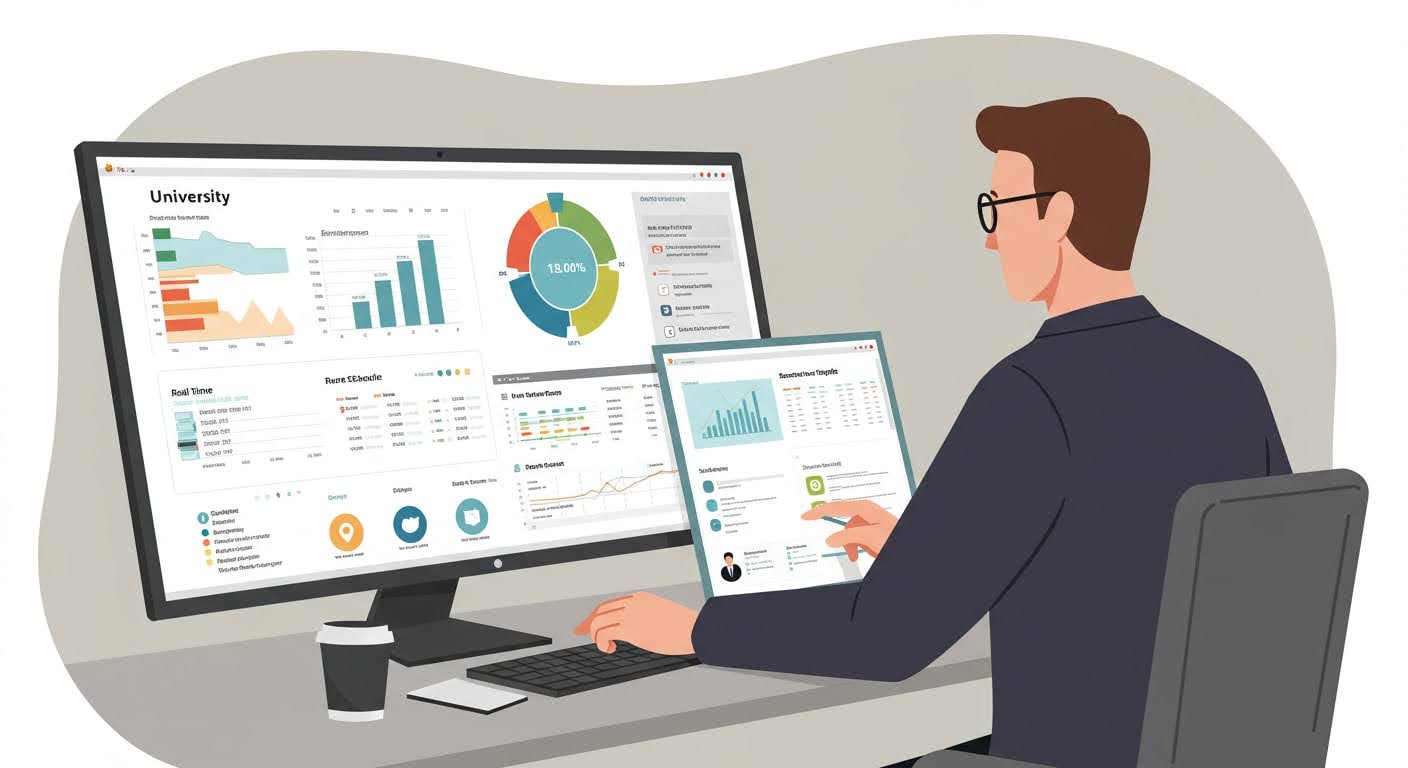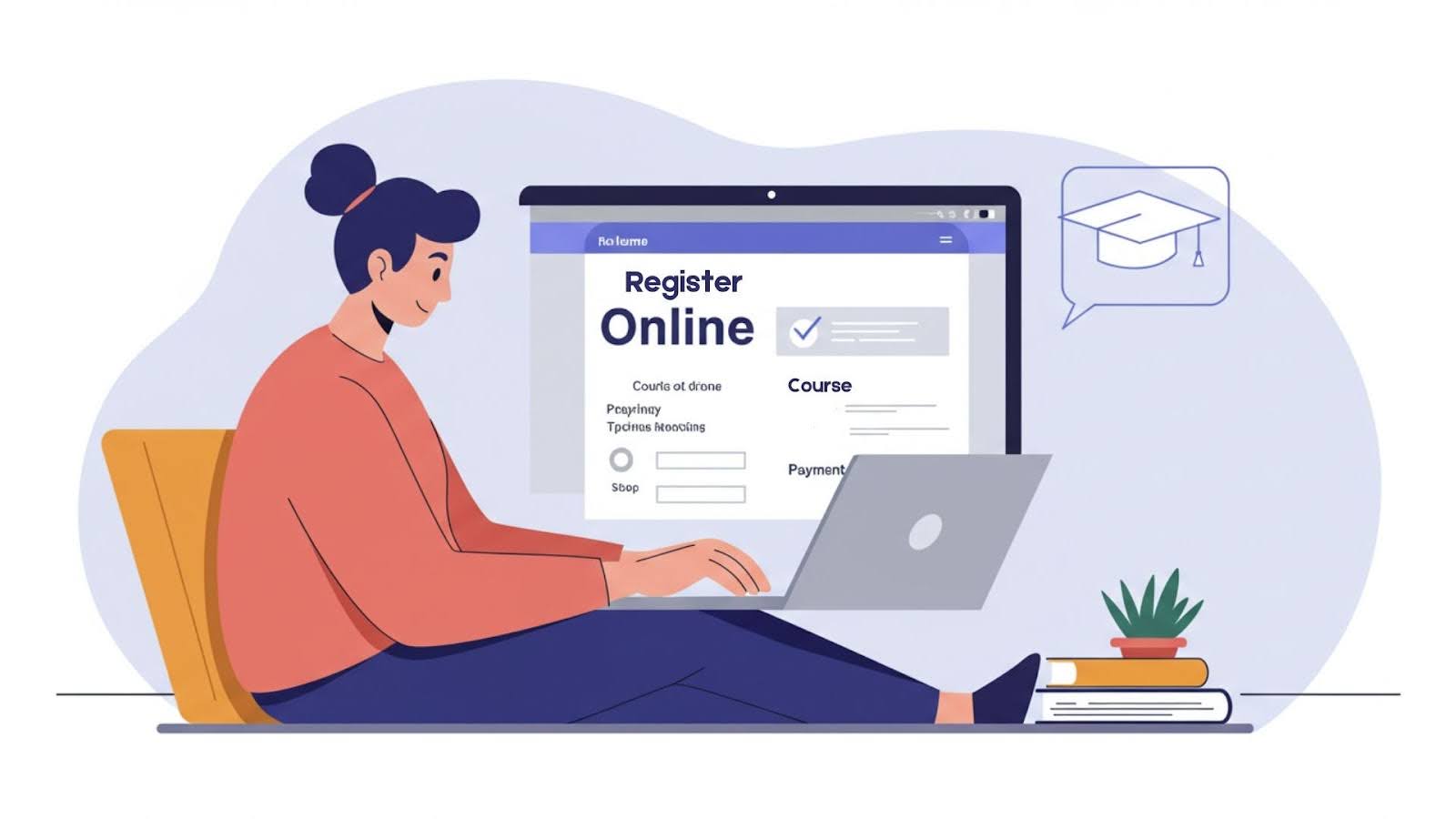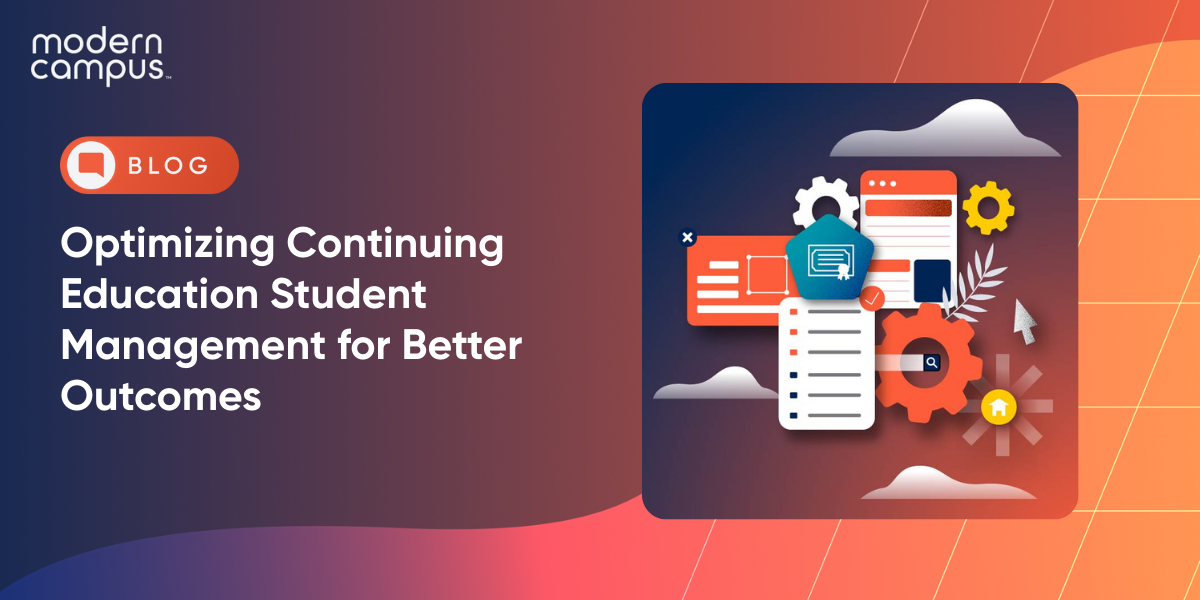Optimizing Continuing Education Student Management for Better Outcomes
The demand for continuing education is growing rapidly as student management becomes a top priority for institutions looking to attract and retain lifelong learners. With more adult learners seeking career advancement and skill development through non-degree programs and non-credit courses, many institutions struggle to keep up with evolving expectations.
Traditional student information system (SIS) platforms often lack the flexibility needed to manage these diverse learning paths, leading to time-consuming administrative tasks that slow down enrollment and frustrate both staff and students. Without a streamlined process in place, institutions risk losing prospective students to competitors offering a more seamless and engaging experience.
To meet the unique needs of non-traditional learners, institutions must adopt a modern approach to continuing education management. By leveraging a customer-centric, technology-driven strategy, they can automate online registration, track student progress with full visibility and deliver flexible, career-aligned programs that increase revenue and student success. The right continuing education student management software reduces administrative burdens while enhancing staff efficiency, allowing educators to focus on helping students achieve their goals.
The Key to Better Outcomes: Optimizing Continuing Education Student Management
Successfully managing continuing education programs demands a streamlined process that enhances student experiences, supports staff efficiency and drives measurable outcomes. Many institutions still rely on outdated or fragmented systems that make it difficult to track enrollment, manage non-traditional learners and provide the flexibility today’s adult learners expect. Without a centralized student management solution, administrative bottlenecks slow down operations, creating frustrating experiences for both students and staff.
A modern continuing education student management approach prioritizes automation, data-driven insights and seamless integration with existing infrastructure. Institutions that invest in advanced technology gain the ability to provide a more student-centric lifelong learning experience. By leveraging a single system that connects enrollment, finance and program management, institutions can reduce inefficiencies, improve student engagement and ultimately increase revenue while delivering high-quality education.
Challenges in Managing Continuing Education Programs
Despite the increasing demand for continuing education programs, many institutions struggle to keep up with the evolving needs of adult learners. Managing these programs comes with unique challenges, from outdated systems and time-consuming administrative tasks to the need for greater flexibility and personalized student support. Without the right tools, institutions risk losing prospective students who seek seamless, career-aligned education options.

Increasing Complexity in Lifelong Learning Pathways
The rise of non-degree courses, micro-credentials and workforce development programs has expanded learning opportunities, but it has also complicated program management. Institutions must be able to efficiently track student progress, customize learning paths and provide real-time insights—all of which can be difficult without a new system designed for continuing education.
Time-Consuming Administrative Tasks That Drain Resources
Manual processes such as course scheduling, online registration and payment processing take up valuable time that could be spent on student engagement and program development. A lack of automation leads to delays, errors and frustrated students, while overburdened staff struggle to keep up with demand. Investing in a management system that streamlines operations can increase staff efficiency and free up resources.
Meeting the Unique Needs of Non-Traditional Learners
Non-traditional learners often juggle work, family responsibilities and education all at once. This requires flexible scheduling, non-credit courses and personalized support. Close to 80% of students hold some type of job, 30% of which involve full-time obligations.
Institutions that fail to provide accessible, student-centric learning experiences may see lower enrollment and retention rates. Adopting a continuing education SIS that supports hybrid and online learning, self-paced study and personalized communication can help institutions better serve this growing student population.
How Continuing Education Management Software Transforms Efficiency
Well-implemented continuing education management software can revolutionize the way institutions handle continuing education programs. With this, they’re able to address inefficiencies and create a streamlined process that benefits both students and staff. Leveraging the right technology allows institutions to automate enrollment, reduce time-consuming administrative tasks and deliver the personalized experiences that non-traditional learners expect. Given that nearly two-thirds of students are interested in skills-based learning to advance their careers, institutions must adopt flexible, responsive solutions that support career-aligned education pathways.

Automating Enrollment and Registration for Seamless Access
Manual registration processes often create barriers for students looking to quickly enroll in non-credit courses or non-degree programs. A continuing education SIS with online registration capabilities simplifies the process, ensuring that students can easily find, enroll in and pay for courses without unnecessary delays. Institutions that streamline operations in this way enhance the student experience and increase revenue by minimizing enrollment drop-offs.
Enhancing Staff Efficiency with Smart Workflow Tools
Without automation, administrative teams spend countless hours managing course catalogs, processing payments and handling student inquiries. A single system that integrates all aspects of continuing education student management allows staff to focus on program development and student engagement. By increasing staff efficiency, institutions can do more with fewer resources while improving overall service quality.
Using Data to Personalize Student Engagement and Support
A customer-centric approach to continuing education requires leveraging data to anticipate student needs and tailor communication. Modern student management tools provide full visibility into enrollment trends, course performance and student engagement—enabling institutions to offer personalized recommendations. Students stay on track, feel supported and remain engaged throughout their learning journey, ultimately leading to higher retention and success rates.
The Role of a Continuing Education SIS in Driving Student Success
A continuing education SIS is a management system that empowers institutions to serve their students with greater efficiency, flexibility and insight. Adult learners require education that fits their schedules, career goals and financial realities. Whether an institution is offering non-degree courses, professional certifications or workforce development programs, an SIS designed for continuing education student management helps create a seamless experience that fosters engagement and success.
Simplifying Course and Program Management for Higher Education
Managing continuing education programs requires flexibility. Students may enroll in short-term workshops, rolling admissions programs or hybrid learning experiences. A continuing education SIS allows institutions to track courses, adjust schedules and manage faculty assignments in real time.
For example, if a college notices that demand for a cybersecurity certification course is rising, a flexible system enables them to quickly add more sections and instructors to meet the need.
Providing Flexible Learning Options for Busy Adult Learners
Unlike traditional students, adult learners balance their education with jobs, families and other responsibilities. A customer-centric SIS makes it easier for students to choose between online registration, in-person classes, weekend workshops or self-paced learning modules.
Consider a working professional looking to transition into project management. Being able to seamlessly enroll in an evening or weekend non-credit course could be the deciding factor in their commitment to continuing their education.
Ensuring Accurate Reporting and Compliance Tracking
Institutions must be able to track student progress, financial aid and compliance requirements without excessive paperwork or administrative hassle. A continuing education management system with built-in reporting tools provides full visibility into student success rates, course completion and financial transactions.
For example, when institutions partner with corporate training programs, accurate reporting ensures that organizations can track employee learning progress and justify their education investments.
With a continuing education SIS, institutions can offer more flexible, responsive and engaging programs, ensuring that students stay on track while institutions benefit from revenue growth.
Future-Proofing Continuing Education Management for Long-Term Growth
Adult learners and non-traditional students expect education to be accessible, career-relevant and adaptable to their changing needs. Institutions that fail to modernize risk falling behind, losing prospective students and missing out on valuable revenue opportunities. By leveraging continuing education software designed for scalability, institutions can retain learners over the long term.

Future-proofing student management means adopting technologies and strategies that allow for continuous innovation, ensuring institutions remain responsive to workforce development trends and student demands.
Integrating Workforce Development for Career-Focused Learning
The demand for skills-based learning continues to grow, with more students prioritizing non-degree programs that offer direct pathways to employment. Institutions that integrate workforce development initiatives—such as employer partnerships, apprenticeships and industry certifications—create a competitive advantage.
For example, a university offering non-credit courses in data analytics can collaborate with local tech companies to provide students with hands-on project experience, ensuring graduates have job-ready skills.
Leveraging AI and Predictive Analytics to Improve Outcomes
Data-driven decision-making is becoming essential for higher ed student management. AI-powered analytics can help institutions identify at-risk students, predict enrollment trends and optimize course offerings.
If an institution notices that enrollment in digital marketing courses spikes every fall, predictive insights could help them streamline operations by adjusting schedules, increasing course capacity and targeting prospective students with timely marketing efforts.
Adapting to Market Trends with a Scalable Management System
A rigid student management platform can prevent institutions from evolving with industry demands. A single system that integrates with continuing education SIS, financial platforms and marketing tools ensures institutions can expand their offerings without overloading administrative teams. Whether launching micro-credential programs or expanding online learning, having a flexible, scalable management system ensures growth while maintaining efficiency and student engagement.
By embracing future-ready strategies and continuing education management software, institutions can develop programs that meet industry needs, enhance student success and drive long-term enrollment growth.
Take the Next Step: Elevate Your Continuing Education Strategy
The landscape of continuing education student management is shifting, and institutions that embrace innovation will thrive. Learners expect flexible programs, career-aligned pathways and seamless digital experiences that allow them to upskill on their own terms. Outdated systems and time-consuming administrative tasks create barriers that drive prospective students elsewhere. To stay competitive, institutions need a streamlined process that supports both students and staff while optimizing enrollment and retention.
At Modern Campus, we specialize in helping institutions streamline operations, improve student engagement and drive long-term success with solutions built exclusively for higher education programs. Our continuing education SIS empowers institutions with full visibility into student progress, automated online registration and tools to enhance staff efficiency. You can focus on delivering high-impact learning experiences. Let’s build a future where your institution doesn’t just keep up with change but leads the way. Contact us today to discover how Modern Campus can help you grow.
Last updated: May 1, 2025

